|
|
|
|
Seismic data interpolation without iteration using |
We utilized a 2D synthetic model composed of nonstationary events with
conflicting dips to test the effectiveness of the proposed method
(Figure 2a). Two curved events and one dipping event
show different amplitudes. We removed ![]() of randomly selected
traces specially at the intersecting position
(Figure 2b). For comparison, we used a 2D Fourier POCS
with 19
of randomly selected
traces specially at the intersecting position
(Figure 2b). For comparison, we used a 2D Fourier POCS
with 19![]() 8 patches and a conventional streaming PEF
(Fomel and Claerbout, 2016) to interpolate the missing traces
(Figure 3a and
Figure 3b). The size of each patch was
set as 40
8 patches and a conventional streaming PEF
(Fomel and Claerbout, 2016) to interpolate the missing traces
(Figure 3a and
Figure 3b). The size of each patch was
set as 40![]() 50 and the iteration number was selected to be 150 in
the Fourier POCS method. The interpolated results using the SPF with
causal and non-causal filters are shown in
Figure 3c and
Figure 3d, respectively. The difference
between the reconstructed traces and the original traces is shown in
Figure 4. For space non-causal filters, we
designed a 2D
50 and the iteration number was selected to be 150 in
the Fourier POCS method. The interpolated results using the SPF with
causal and non-causal filters are shown in
Figure 3c and
Figure 3d, respectively. The difference
between the reconstructed traces and the original traces is shown in
Figure 4. For space non-causal filters, we
designed a 2D ![]() -
-![]() SPF with 25 (time)
SPF with 25 (time) ![]() 23 (space)
coefficients and scalar parameters of
23 (space)
coefficients and scalar parameters of ![]() = 0.05,
= 0.05, ![]() = 0.8,
= 0.8,
![]() = 0.5, and
= 0.5, and ![]() = 0.5 for each sample. The 2D
Fourier POCS method with patching windows and SPF with causal filters
produced similar results, except that more spatial aliasing was
generated for the POCS method. The conventional streaming PEF has
evident spatial aliasing at the cross position of the events and the
lower right corner due to the helix transform. However, the proposed
method reconstructed a reasonable result, where the interpolation
errors were substantially reduced. The CPU times, for a single 2.10
GHZ CPU used in this study, were 2.68 s for the 2D Fourier POCS and
0.90 s for the proposed method.
= 0.5 for each sample. The 2D
Fourier POCS method with patching windows and SPF with causal filters
produced similar results, except that more spatial aliasing was
generated for the POCS method. The conventional streaming PEF has
evident spatial aliasing at the cross position of the events and the
lower right corner due to the helix transform. However, the proposed
method reconstructed a reasonable result, where the interpolation
errors were substantially reduced. The CPU times, for a single 2.10
GHZ CPU used in this study, were 2.68 s for the 2D Fourier POCS and
0.90 s for the proposed method.
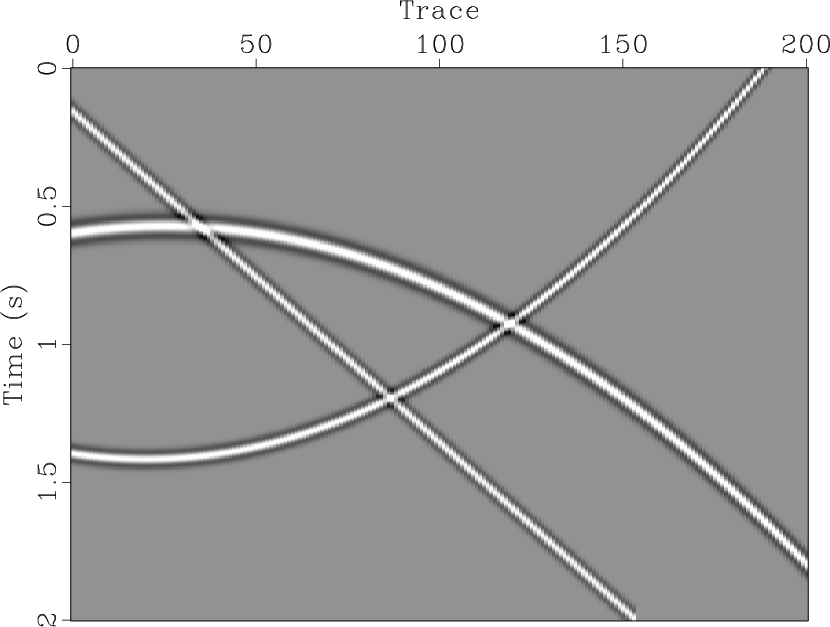
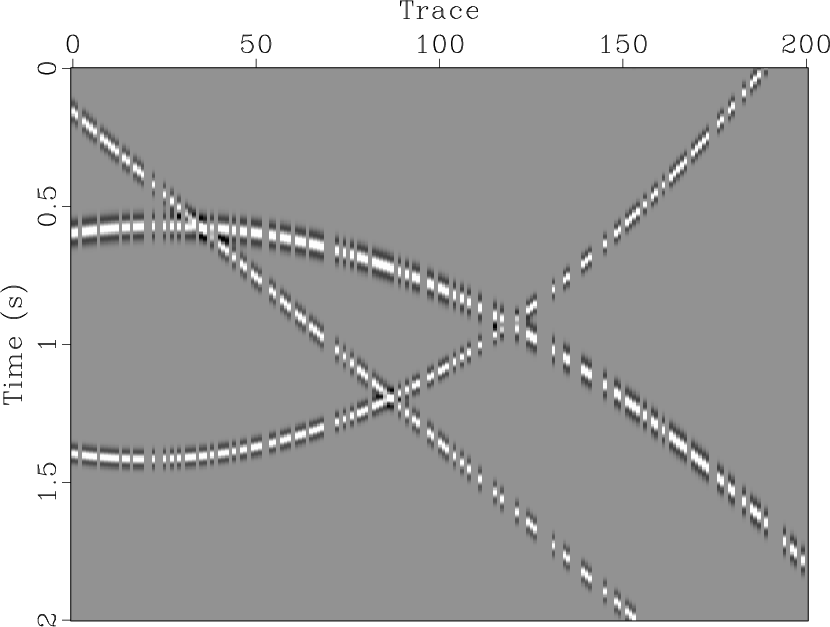
|
|---|
|
mc,gc
Figure 2. (a) Synthetic data with three events and (b) model with |
|
|
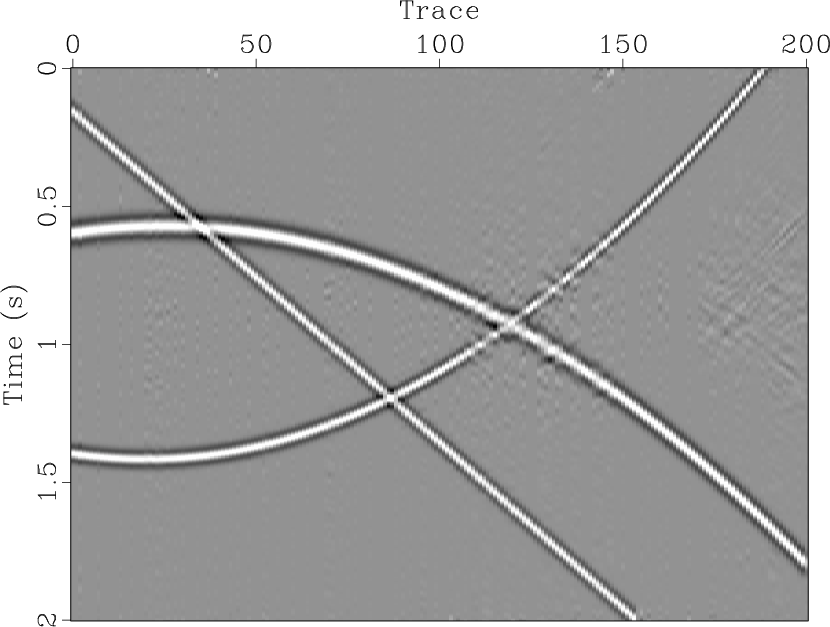


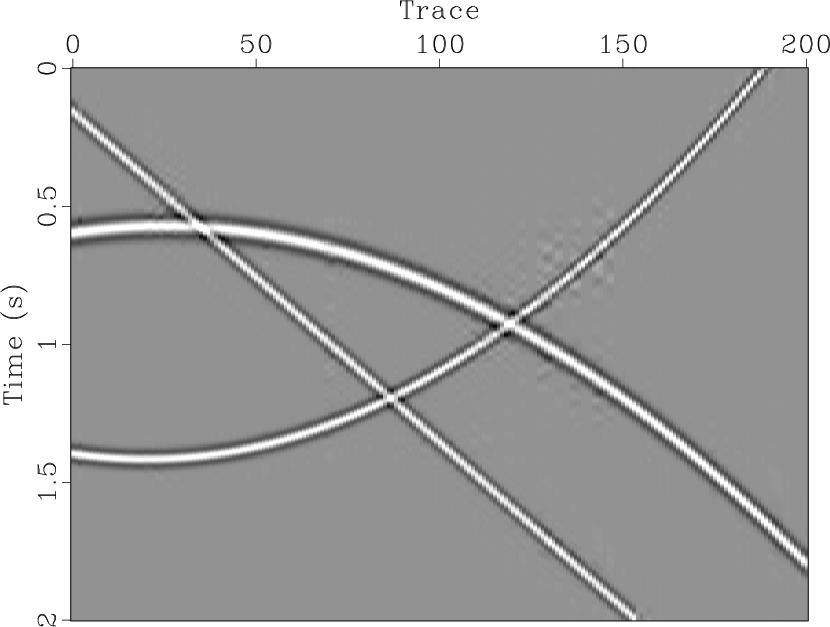
|
|---|
|
pocsp,interh,adds,ac
Figure 3. Reconstructed results by using different methods. (a) The 2D Fourier POCS, (b) the 2D streaming PEF, the 2D |
|
|
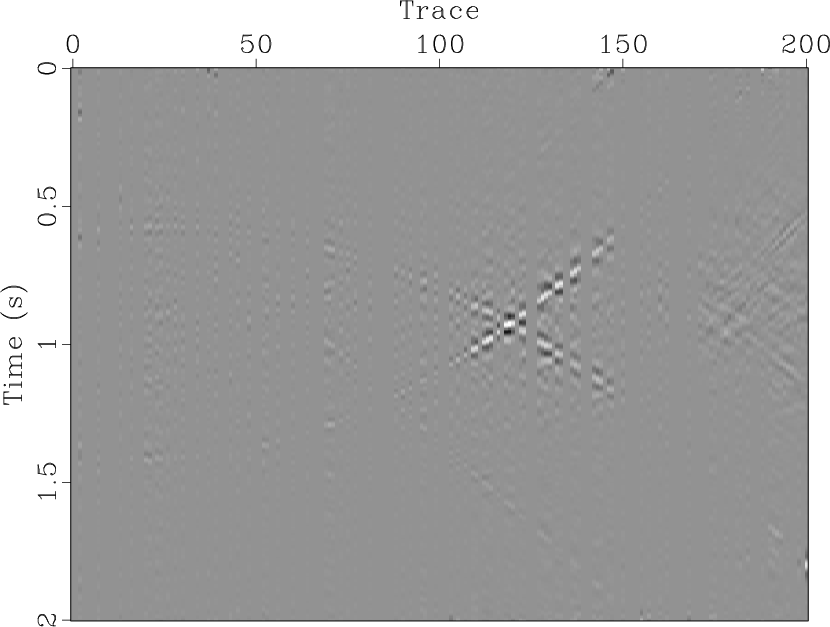
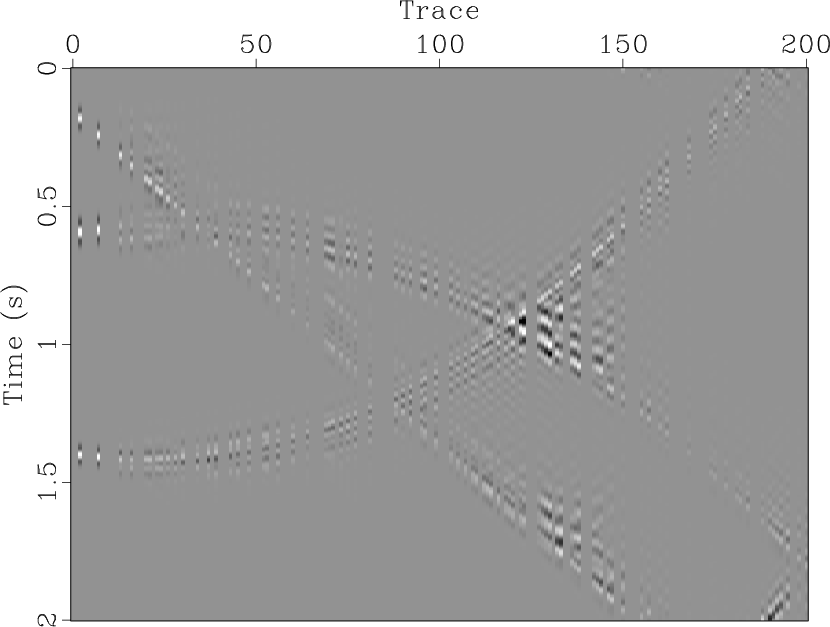

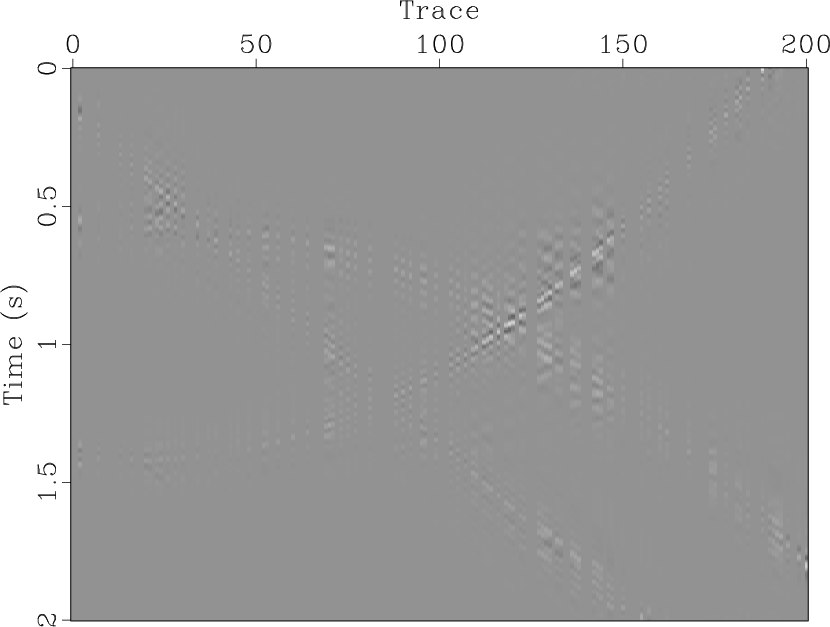
|
|---|
|
dcpp,difh,difs,dcs
Figure 4. Interpolation errors by using different methods. (a) The 2D Fourier POCS, (b) the 2D streaming PEF, the 2D |
|
|
|
|
|
|
Seismic data interpolation without iteration using |